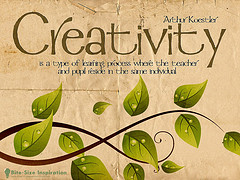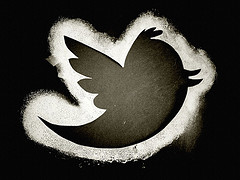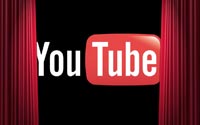Browse by Tag
- "Real" Innovation (2)
- Alignment (6)
- Business Innovation (9)
- Business Plan (2)
- Business Plans (1)
- Creativity (24)
- Critical Success Factors (4)
- Entrepreneurship (9)
- Global Competiveness (4)
- Human Side (11)
- India (1)
- Innovation (4)
- Innovation Consulting (18)
- Innovation Killers (3)
- Innovation Management (18)
- Innovation Tools (17)
- Innovation Training (24)
- Innovations (7)
- Inventions (16)
- IT Innovation (1)
- Leaders (5)
- Leadership (20)
- Leadership Development (13)
- Organizational Leadership (2)
- Organizational Strategy (20)
- Personal Values (6)
- Prediction (5)
- Strategic Innovation (38)
- strategic planning process (4)
- Strategy (3)
- Training (1)
- Vision (5)
- Weekly Dose (8)
Posts by Month
- 2014
- 2013
- 2012
- 2011
- 2010
- 2009
- 2008
- 2006
6 Creativity and Innovation Books for Your Office
In my experience, all ideas come from an emotion of creativity. Many ideas are easy to find. However, the breakthrough ideas need staff that is challenged to solve the greatest problems Books in this category will help you identify the problem space as well as solution space by tapping into the hearts and minds of your people.

|
Managing Creativity and Innovation (Harvard Business Essentials) Packed with practical information designed for business readers and managers at all levels, this essential volume offers insights on managing creativity in groups, developing creative conflict, and using technology to help foster innovation. |

|
Think Better: An Innovator's Guide to Productive Thinking by TimHurson There are thousands of books about thinking. But there are very few books that provide clear how-to information that can actually help you think better. Think Better is about Productive Thinking - why it's important, how it works, and how to use it at work, at home, and at play. Productive Thinking is a game changer - a practical, easy-to-learn, repeatable process that helps people understand more clearly, think more creatively, and plan more effectively. It's based on the thinking strategies that people we celebrate for their creativity have been using for centuries. Tim Hurson brings Productive Thinking out of the closet and presents it in a way that makes it easy for anyone to grasp and use - so you can think better, work better, and do better in every aspect of your life. Think Better demonstrates how you can start with an intractable technical problem, an unmet consumer need, or a gaping chasm in your business strategy and, by following a clearly defined, practical thinking process, arrive at a robust, innovative solution. Manycompanies use the Productive Thinking model to generate fresh solutions for tough business problems, and many individuals rely on it to solve pressing personal problems. |

|
Creativity and Innovation in Organizational Teams stemmed from a conference held at the Kellogg School of Management in June 2003 covering creativity and innovation in groups and organizations. Each chapter of the book is written by an expert and covers original theory about creative processes in organizations. The organization of the text reflects a longstanding notion that creativity in the world of work is a joint outcome of three interdependent forces--individual thinking, group processes, and organizational environment.
|

|
The author of the bestselling The Art of Innovation reveals the strategies IDEO, the world-famous design firm, uses to foster innovative thinking throughout an organization and overcome the naysayers who stifle creativity. |

|
Leadership for Innovation: How to Organize Team Creativity and Harvest Ideas by John Eric Adair New ideas and new ways of doing things are one of the main ingredients in sustained business success, but how does one create the right conditions for innovation?
|

|
CATS: The Nine Lives of Innovation by Stephen C. Lundin It's time to let the CATS out of the bag . . . Curiosity might have killed the proverbial cat, but without it very real achievements would never occur. With this book as your guide, you'll learn how to spark your innate curiosity, pounce on problems in ways you never imagined, and enjoy greater success and satisfaction at work-and in your personal life. Playful, profound, and positively upbeat, CATS provides what you need to tap into your power of innovation-and then unleash it in every member of your organization. While most business thinkers view this challenge from the top down, Stephen Lundin sees the subject from a CAT's-eye view, explaining how to get every employee--no matter what level--to think and act in innovative ways. Inside, he examines the four challenges to innovation and offers practical measures aimed at conquering them. |
The Takeaway
Challenge your staff to think creatively about customer needs in new and unique ways.
Your Turn. Please comment below.
- What creativity and innovation books would you add to the list?
- Which of the books on the list did you enjoy the most?
- If only one book could be written on Creativity and Innovation what should its focus be?
Innovation in Highly Regulated Environments - Global Bio-Pharmaceutical Case Study
Pharmaceuticals is an industry that impacts each one of us. Due to the highly regulated environment, it is difficult to easily drive product innovations.
Four Focus Areas for Industry Innovation
Therefore, Pharma must focus on 1) business model innovations, 2) process innovations, 3) delivery innovations, and 4) customer experience innovations.
Let's take a look at how a $26 Billion company with 30,000 employees, in 24 countries based in U.S.
Client Situation:
The client, a leading pharmaceutical company with international operations, was faced with a growth gap, having experienced several years of flat sales and heavy competition in U.S. and generics.
The company had recently initiated a global expansion program. However, they quickly realized that this endeavor would be limited and insufficient in meeting its future growth goals. The company's track record in organic growth and innovation was limited.
The challenge was to improve the company's innovation capacity, identify new growth opportunities, and have a showcase success within two years.

Six Stage Approach:
- Diagnosis: The DeSai Group diagnosed the client's current situation, past innovation successes and failures.
- Recommendation: Based upon these findings, recommendations for enhancing the company's innovation capacity were made.
- Ideation: Through a highly structured ideation process, DeSai and the client identified and clustered ideas into Value-Platforms.
- Evaluation: The various Value-Platforms were created, evaluated, and prioritized.
- Refinement: The high priority platforms were further expanded with detailed product and service value propositions.
- Final Refinement: Six teams were formed for each platform to further build out business briefs to lead to specific business plans within six months.
Results Are The Measure of Innovation Success
How did applying the DeSai Body of Knowledge impact the company?
- A Venture Board was established.
- Proposals were evaluated by the Venture Board composed of both internal and external members.
- Five candidate business ventures were selected having revenue potential of $350Million.
- The existing portfolio was evaluated and 25% of the ongoing projects were halted.
- The evaluation process yielded 20% of the client's R&D resources for re-allocation.
- An Innovation Board and Innovation Process Owner were established to lead the innovation projects.
The Takeaway
Through a climate and culture of innovation companies can continue to generate value for everyone within their stakeholder system.
Your Turn. Please comment below.
- How does your organization ideate future concepts?
- What has your experience been with Venture Boards and similar concepts?
- In what types of Innovation does your company focus?
Five Power Skills For Discovering Radical Ideas
 On October 22, 2013 Professor Vijay Govindarajan and I co-authored a blog about Discovering Radical Ideas for the Harvard Business Review Blog.
On October 22, 2013 Professor Vijay Govindarajan and I co-authored a blog about Discovering Radical Ideas for the Harvard Business Review Blog.
In the article, we outlined a five-step process to create a consistent flow of "big" ideas to transform your business for the challenges it will face in the coming years. Here is the beginning of it:
Innovation starts with new and novel ideas. Over the last 20 years, we have worked with many world-class brands to help find their next "big thing." During the initial phases of our work together, it becomes obvious that they have plenty of good ideas. Finding ideas is never the problem - initially. The challenge is finding radical ideas consistently year after year.
When we surveyed over 300 global executives between 2008 and 2009, one of the primary concerns they expressed was their inability to compete long term without a solid innovation engine that can grow their top line. In order to do this, your company needs a process to source radical ideas that can catapult your business to new heights, open up new markets, or bring in completely unfamiliar profit streams.
Building a Culture and Climate of Innovation - You Can Do It
Building a Culture and Climate of Innovation - You Can Do It
Read part two of Jatin Desai's interview with the Propelling Marketing Ideas blog. He focuses on Culture and Climate of Innovation. He answers the following questions
- How can a company build culture of innovation? (in other words, how can they foster innovation?)
- What does a company need to do to build strong leaders for innovation?
- How does a company teach innovation and coach others?
- How does a firm promote and build innovation teams, especially across silos?
- How do you make innovation a daily habit for everyone at all levels in a company?

Read the interview here.
Top 50 Innovation Twitter Sharers of 2013
My friends over at Innovation Excellence are always hard at work writing and curating materials relevant to those of us in the Innovation space. They compiled Top 50 Innovation Twitter Sharers of 2013. The names appear in no particular order.

Top 50 Innovation Tweeters of 2013:
• Paul Hobcraft (@paul4innovating)
• Kevin McFarthing (@innovationfixer)
• Ralph Christian Ohr (@ralph_ohr)
• Tim Kastelle (@timkastelle)
• Braden Kelley (@innovate)
• Greg Satell (@digitaltonto)
• Gregg Fraley (@greggfraley)
• Jeffrey Phillips (@ovoinnovation)
• Nicolas Bry (@nicobry)
• Jeffrey Baumgartner (@creativeJeffrey)
• Matthew E May (@matthewemay)
• Stefan Lindegaard (@lindegaard)
• Mike Brown (@brainzooming)
• Deborah Mills-Scofield (@dscofield)
• Shaun Coffey (@shauncoffey)
• Rowan Gibson (@rowangibson)
• Bill Fischer (@bill_fischer)
• Dave Gray (@davegray)
• Drew Marshall (@drewcm)
• Paul Sloane (@paulsloane)
• Jorge Barba (@jorgebarba)
• Calestous Juma (@calestous)
• JR Reagan (@ideaxplorer)
• Cathryn Hrudicka (@creativesage)
• Juan Cano-Arribi (@pull_innovation)
• Vincent Carbone (@insitevc)
• Sarah Caldicott (@SarahCaldicott)
• Eric Shaver (@ericshaver)
• Max McKeown (@MaxMckeown)
• Boris Pluskowski (@bpluskowski)
• Doug Collins (@innoarchitect)
• LDRLB (@ldrlb)
• Andrea Meyer (@andreameyer)
• Stephen Shapiro (@stephenshapiro)
• Marc Sniukas (@sniukas)
• Saul Kaplan (@skap5)
• Nilofer Merchant (@nilofer)
• Alex Osterwalder (@alexosterwalder)
• Graham Hill (@grahamhill)
• Jose Briones (@brioneja)
• Arie Goldshlager (@ariegoldshlager)
• Scott Berkun (@berkun)
• Julie Anixter (@julieanixter)
• Ross Dawson (@rossdawson)
• Ian McCarthy (@toffeemen68)
• John Hagel (@jhagel)
• Jose Baldaia (@jabaldaia)
• Frank Piller (@masscustom)
• Scott Anthony (@ScottDAnthony)
• Gary Schirr (@ProfessorGary)
Bonus tweeter Jatin Desai (@jhdesai)
The Takeaway
Innovation is a vast, ever changing field. Keep up with some of the leading thinkers by following folks compiled in the list.
It is your turn. Share your wisdom. Please comment below.
1. Who do you follow on Twitter that is not on the list and what is their Twitter handle?
2. Where else do you gain knowledge from Innovation thinkers?
3. What is the most interesting piece of Innovation knowledge you have gained this month?
Creating the Purple Thing that Makes Trillions
Consider the following:
- The other day in a LinkedIn discussion on creativity as a precursor to innovation, someone commented that every discussion on creativity seems to devolve into personal or pet theories on the subject.
- A recent email with some insights from the HR Management Institute's conference on "Enhancing HR as a Strategic and Transformative Business Partner in Times of Volatility and Change," admonished: "If you're not authentically engaged in the competition for talent already, there's little time to waste. Nearly three million employees voluntarily left their employer in January, the highest level since June, 2008." One conference speaker followed up with a blog on "The Top 5 signs You're already Losing the Talent War"
- FEI posits that if you attend FEI US, you will, "Walk away with the answers and motivation to lead your organization into the next 10 years." The top 3 bullet points:
- Creativity under pressure
- Finding your next trillion dollar opportunity
- Creating an environment that breeds innovation

What this means:
- There is agreement that creativity is integral to innovation but disagreement on what it is and how to keep it flowing.
- If top management has not yet removed the barriers within your organization that stifle the flow of creativity and innovation, has neglected to create a viable and sustainable culture and climate in alignment with your vision, and still needs parameters in place to find good people and sustain relationships, you are backpedaling on the back roads in the state of outdated paradigms.
- In this exponentially changing business climate, the pressure to get ahead is weighing many organizations down, while the pressure to be sustainably edgy but relevant in finding the next innovative wave puts HR, R & D, and top management in far too many meetings. How innovative is your oganization?
Getting back to creativity as the agreed upon source of innovation, would it be beneficial to take a look beyond the structure, policies, vision and existence of the organization itself? Do culture and climate for innovation support have a tough road due not only to entrenched outdated evaluation, training, and leadership models, but perhaps also factors deeper in the societal fabric?

Why is creativity elusive and the creative process so hard to define? Consider this real life scenario.
The Artist. Eschewed a guaranteed-in to Harvard Medical School in the 1960's, left Duke University behind in 3 rd year to earn a degree in American Economic History attending night school at Long Island University; then thanking them for the offer to teach, became a graphic artist to earn a living after welding sculpture after-hours at an industrial job and using old tempura to create a first painting at 26. Has donated his time over the years helping kids find art expression with drawing and sculpting with found objects. His family was stunned by his decisions. He became an artist full time at 50. When asked the question, "What do you think is the biggest obstacle to encouraging creativity?" he replied: " Hardened arteries. Society, education, and business put rules and clamps on intuitive processes. Most art education is not art, is not creative, and at worst is manipulative. The regimentation seen in business begins in the schools. Artists do survive in spite of the schools and industrial environment, but not without emotional and psychological cost. We reward manipulation, not creativity."
All of us innately have a degree of creativity regardless of how or why, and the act of creating fulfills something in us that nothing else can. The real question may be why do we seemingly lose the ability to access it, or are reluctant to acknowledge and use it? Most likely the answer is lack of opportunity, practice and support. We're much too busy actively doing things society/business tells us we should do to be a success in life. As a result, not only do we personally not have time for creative pursuits or feel guilty when we do take the time, but for most of us our jobs and careers do not reward activity that is outside of the accepted norm, and daydreaming is a big no-no, as there is not an accepted cost center code for that activity. As a result, when we are asked to be creative or desire to be, we need to relearn and remember what it is.
How do you find Innovation: 11 Practical Ideas by Jatin Desai
Start Fooling Around - A Business Guide to Innovation
How are Innovation, Creativity, Engagement, Personal and Human Values linked?
Two quotes to enjoy:
"Imagination is more important than knowledge. I never came upon my discoveries through the process of rational thinking." ~ Albert Einstein
"When I was 5 years old, my mother always told me that happiness was the key to life. When I went to school, they asked me what I wanted to be when I grew up. I wrote down 'happy'. They told me I didn't understand the assignment, and I told them they didn't understand life." ~ John Lennon
Example of Innovation using Crowdsourcing in Biology
Cathal Garvey’s home laboratory in Cork, Ireland, is filled with makeshift equipment. His incubator for bacteria is an old Styrofoam shipping box with a heating mat and thermometer that he has modified into a thermostat. He uses a pressure cooker to sterilize instead of an autoclave. Some instruments are fashioned from coffee cans.
One of the movement’s rallying points is Genspace, a nonprofit laboratory in Brooklyn that is open to members of the public, regardless of scientific background. Since it opened in 2010, on the seventh floor of an old bank building, similar labs have sprouted in Boston and San Francisco.

Genspace has roughly a dozen members, and each pays $100 a month to cover rent and what laboratory people call consumables: chemical agents, disposable tubes and other paraphernalia that need to be replaced regularly.
Source: New York Times
Medical Robots are coming
RAVENS have a bad reputation. Medieval monks, who liked to give names to everything (even things that did not need them), came up with “an unkindness” as the collective noun for these corvids. Blake Hannaford and his colleagues at the University of Washington, in Seattle, however, hope to change the impression engendered by the word. They are about to release a flock of medical robots with wing-like arms, called Ravens, in the hope of stimulating innovation in the nascent field of robotic surgery.

Robot-assisted surgery today is dominated by the da Vinci Surgical System, a device that scales down a surgeon’s hand movements in order to allow him to perform operations using tiny incisions. That leads to less tissue damage, and thus a quicker recovery for patients. Thousands of da Vincis have been made, and they are reckoned to be used in over 200,000 operations a year around the world, most commonly hysterectomies and prostate removals.
Source: The Economist
YouTube Invests $100 Million In Original Programming
Google's YouTube plans to invest $100 million in professional production companies producing YouTube-only content beginning this month. Premiering Monday, Young Hollywood takes place on the ninth floor of the Four Seasons Hotel in Los Angeles. The show's creators will produce programming for viewing on mobile devices, computers and Internet-connected TVs.

YouTube VP of Global Content Robert Kyncl announced at the Consumer Electronics Show (CES) the first wave of YouTube channels from artists like CSI creator Anthony Zuiker and Deepak Chopra.
Within a few years, online video will contribute 90% to all online traffic; and by 2020, the Web will give birth to 75% of all media channels, Kyncl said, calling the Web a vehicle for distribution.
Source: MediaPost News - Online Media Daily
A Geek's Guide to China's Silicon Valley
Twenty years ago, Zhongguancun was but farming fields and small houses, far from the city center of Beijing. The ‘cun’ at the end of Zhongguancun literally means “village.” As with much else in China, the change has come lightening fast.
![]()
High-tech companies in China (credit: TechCrunch)
Today, Zhongguancun is China’s closest equivalent to Silicon Valley. It’s host to electronics super malls, research centers, publicly-listed tech giants, and hundreds of startups. During my walk to work between twenty-story office towers, it’s hard to imagine this land was farmed but one short generation ago.
Here are three reasons why Zhongguancun (or the larger Haidian district) has grown into China’s top tech hub:
- Academic Hub
- Government and Media
- A Virtuous Cycle
Source: TechCrunch

